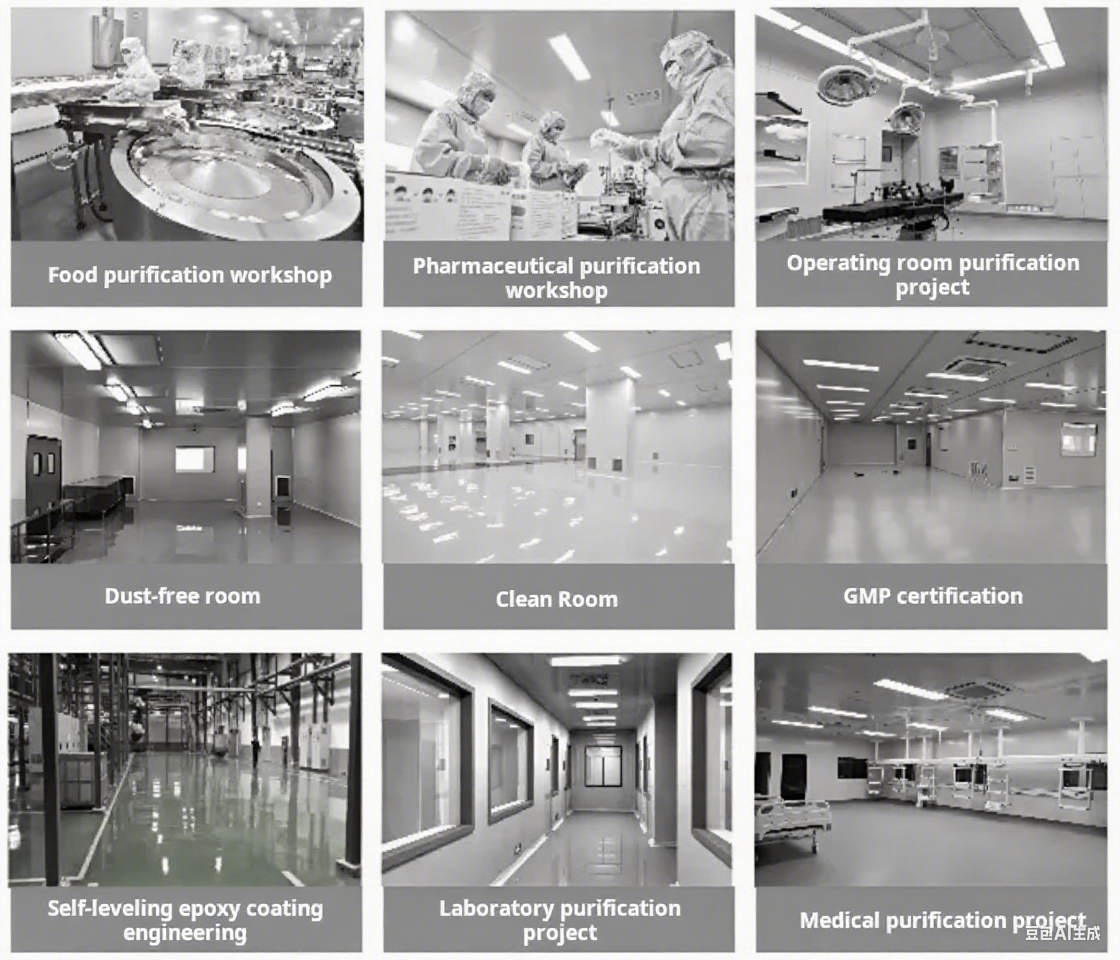Customizing hardwall Clean rooms for Specific Applications: A Comprehensive Guide
Introduction
In industries where precision and sterility are non-negotiable, hardwall clean rooms serve as the backbone of contamination control. But not all clean rooms are created equal—customization is the key to meeting unique operational demands. From pharmaceuticals to Electronics, tailored solutions ensure compliance, efficiency, and performance. This guide explores how Deiiang™, under the expertise of product designer Deiiang Jason.peng, delivers cutting-edge cleanroom customizations aligned with global standards like ISO 14644-1.
1. Industry-Specific Customization: Meeting Unique Demands
Hardwall clean rooms are engineered to address the distinct challenges of various sectors. Here's how customization plays a role:
- Pharmaceuticals: Requires ISO Class 5–8 environments with HEPA filtration to limit microbial and particulate contamination. For example, a vaccine production line may need <100 particles/m³ for 0.5µm particles (ISO Class 5).
- Electronics: Focuses on static control and ultra-low particulate levels (e.g., <3,520 particles/m³ for 0.5µm particles in ISO Class 7) to protect microchips.
Deiiang™ Solution: Leveraging modular designs and advanced airflow systems, Deiiang Jason.peng tailors cleanrooms to industry-specific workflows, such as integrating pass-through chambers for pharmaceutical material transfer.

2. ISO Classification: The Foundation of Cleanroom design
ISO standards dictate Cleanroom cleanliness levels, influencing design and operational protocols:
| ISO Class | Max Particles/m³ (≥0.5µm) | Typical Applications |
|---|---|---|
| ISO 5 | 3,520 | Biotechnology, sterile compounding |
| ISO 7 | 352,000 | Medical devices, electronics |
Example: A Semiconductor facility opting for ISO Class 5 may require 60–100 air changes/hour, calculated as:
Air Changes/Hour = Total Airflow (m³/h) / Room Volume (m³)
3. Optimizing Size and Layout for Efficiency
Custom layouts enhance workflow while minimizing contamination risks:
Modular Designs
Allow scalability; e.g., a 10m x 15m cleanroom can be expanded by 20% using prefabricated panels.
Zoning
Segregates high-risk (e.g., compounding) and low-risk areas. Deiiang™ uses computational fluid dynamics (CFD) to optimize airflow paths.
Case Study: A 200m² electronics cleanroom reduced cross-contamination by 30% after Deiiang Jason.peng redesigned its material flow lanes.
4. Precision Environmental Controls
Temperature (±1°C) and humidity (±5% RH) stability are critical for sensitive processes:
HVAC Systems
Deiiang™ integrates redundant cooling units for 24/7 control, vital for labs like PCR testing (22°C, 45% RH).
Monitoring
Real-time sensors linked to cloud platforms alert deviations beyond set thresholds.
5. Material Selection: Balancing Cleanliness and Durability
Materials impact longevity and compliance:
Walls
Stainless steel (anti-microbial) or powder-coated aluminum (lightweight).
floors
Epoxy resin (seamless, chemical-resistant) for pharmaceutical grade.
Deiiang™ Advantage: Proprietary coatings reduce particle shedding by 40% compared to standard materials.
Conclusion
Customizing hardwall clean rooms involves a meticulous balance of industry standards, spatial design, and advanced materials. Deiiang™, guided by Deiiang Jason.peng, excels in delivering solutions that marry regulatory compliance (e.g., ISO, USP) with operational excellence. Whether scaling for growth or refining environmental controls, tailored cleanrooms are the future of contamination-free manufacturing.
FAQs
Q: How long does customization typically take?
A: 8–12 weeks, depending on complexity (e.g., ISO Class 5 with HVAC upgrades).
Q: Can existing cleanrooms be retrofitted?
A: Yes. Deiiang™ offers retrofitting with minimal downtime (e.g., 72-hour panel replacement).
Q: What's the cost difference between ISO Class 7 and 5?
A: ~20–30% higher for Class 5 due to enhanced filtration and monitoring.
Q: How are humidity levels maintained in arid climates?
A: Deiiang™ uses adiabatic humidifiers with ±2% RH precision.
Q: Which industries benefit most from modular designs?
A: Startups and R&D labs needing future scalability.
References
- iso 14644-1:2015 – CleanRoom Classification.
- Deiiang™ Whitepaper: Modular Cleanroom ROI Analysis (2023).
- IEST-RP-CC012: Materials Testing for Cleanrooms.
- USP <797> – Pharmaceutical Compounding Standards.
- ASHRAE Handbook – HVAC Applications (Chapter 19).
By prioritizing customization, industries can achieve unparalleled control—ensuring both product quality and regulatory adherence.
 +86 18186671616
+86 18186671616 Jason@cleanroomequips.com
Jason@cleanroomequips.com
 MENU
MENU



